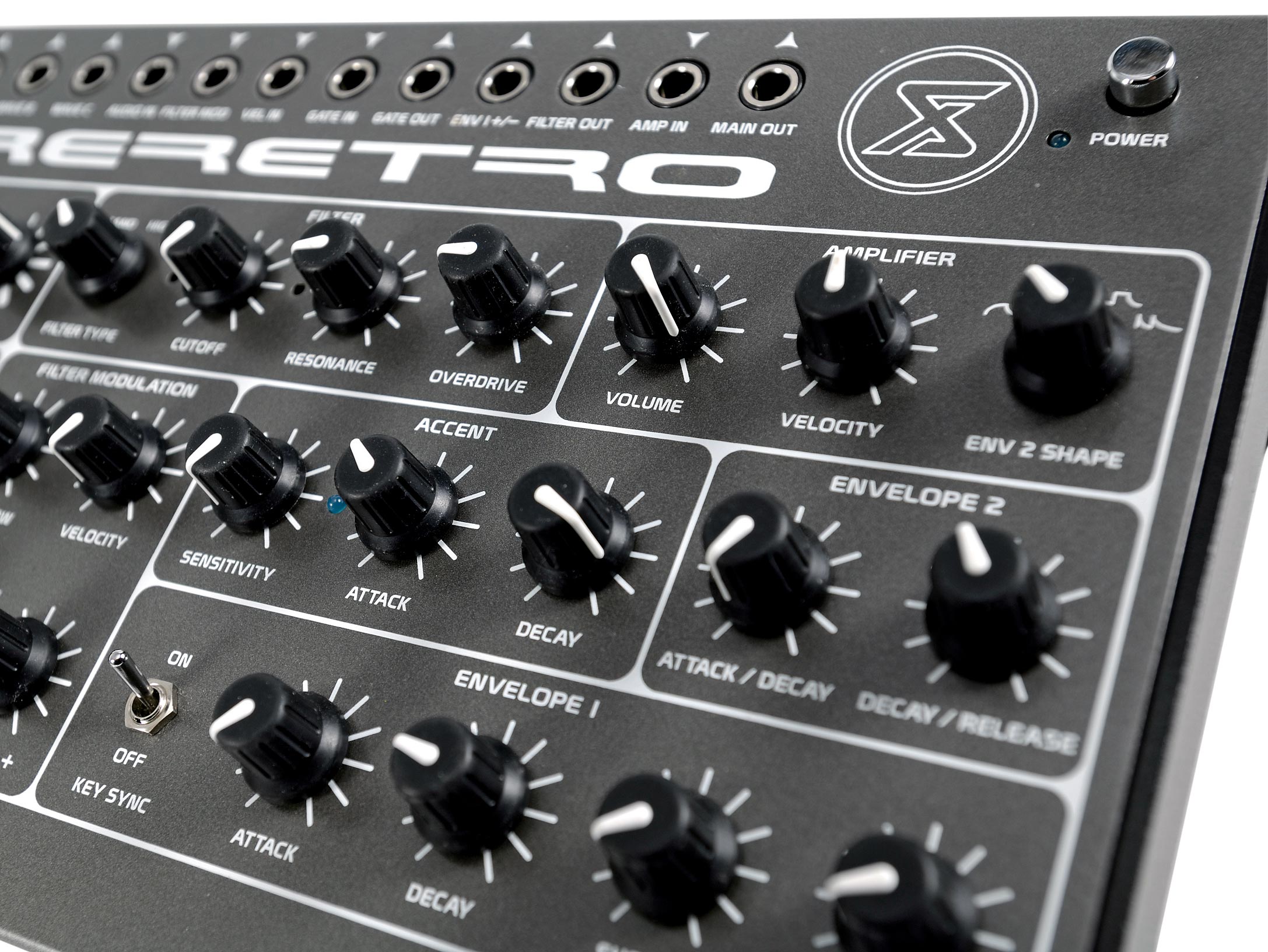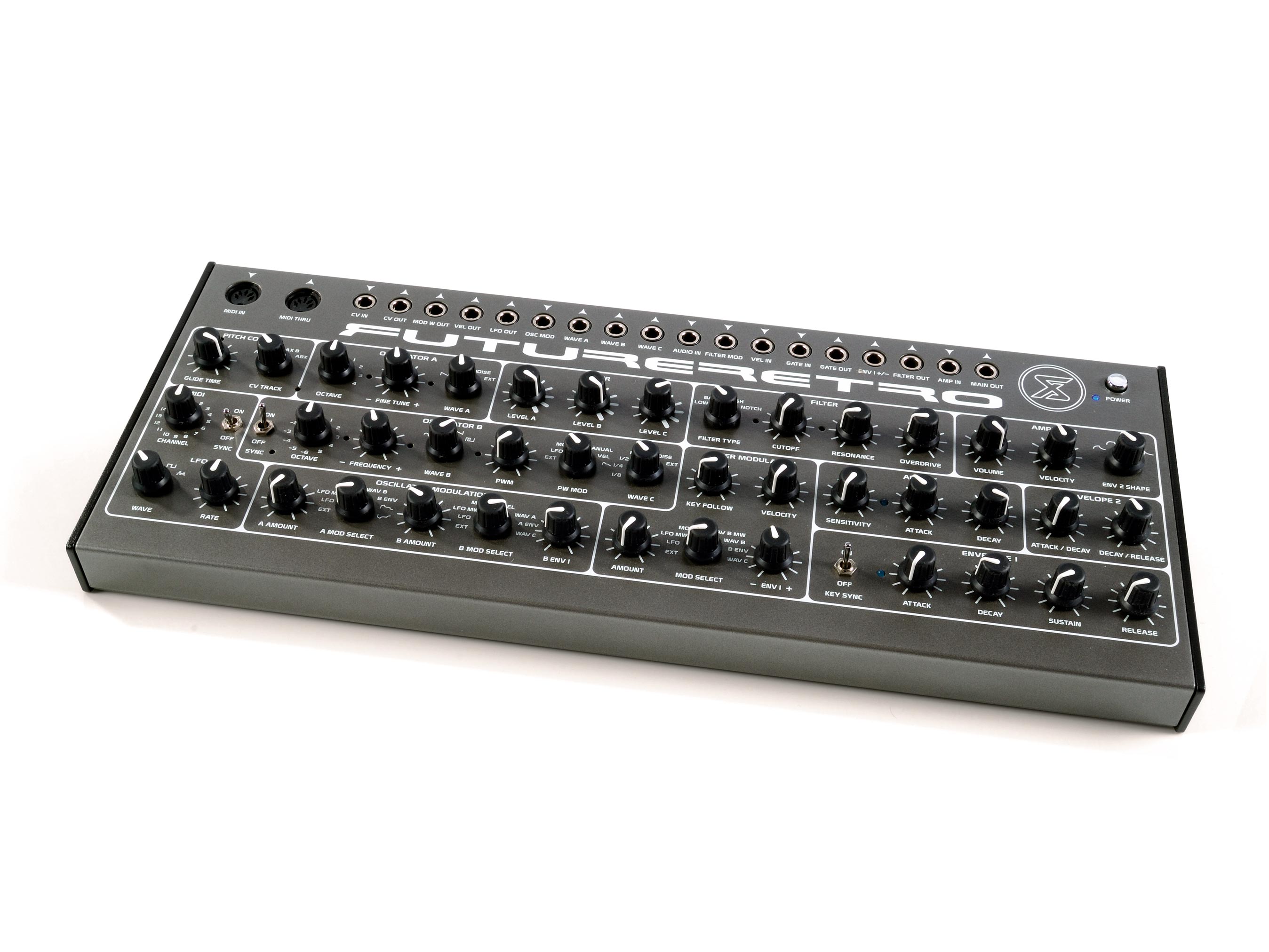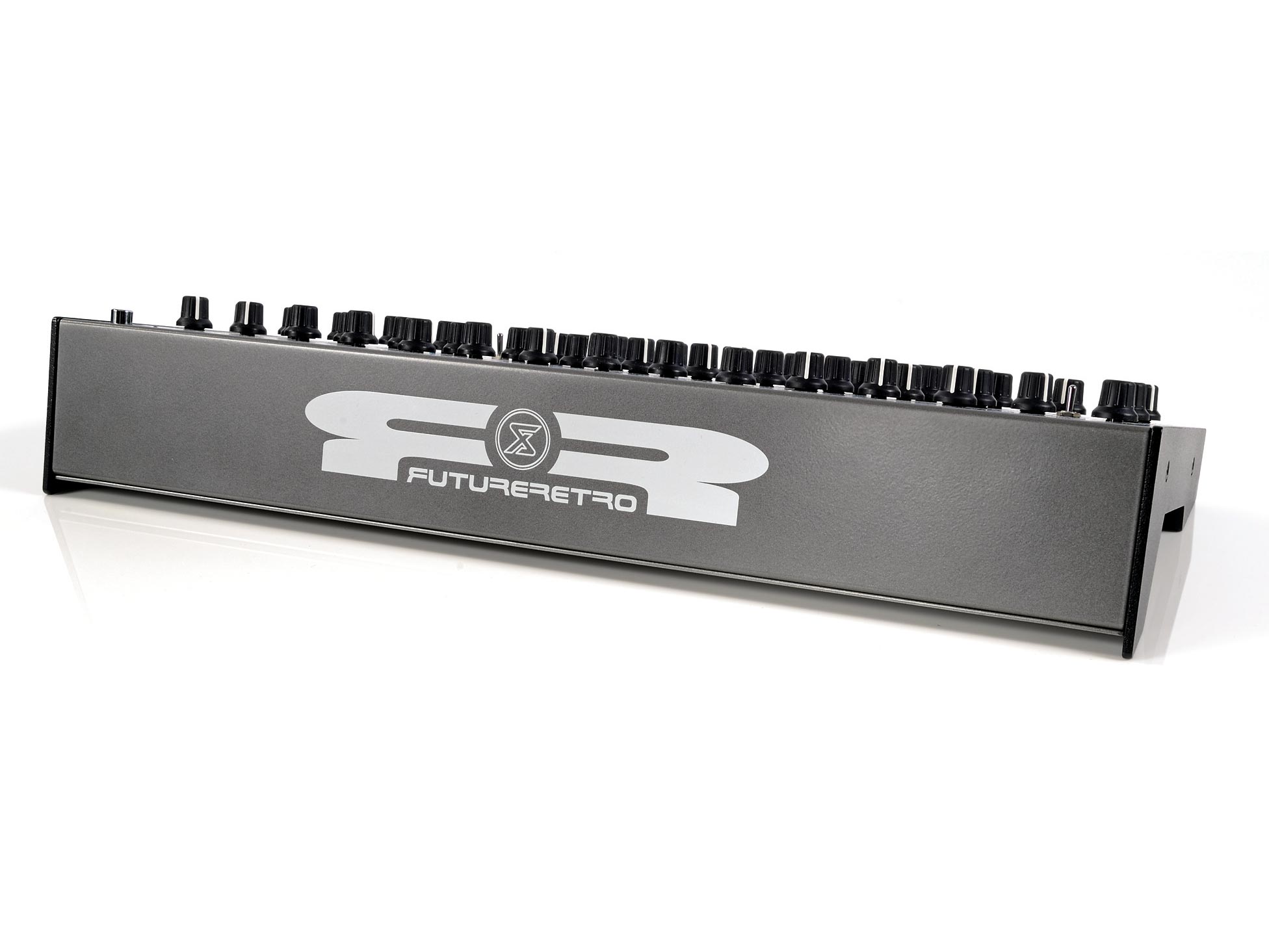MusicRadar Verdict
A tasty analogue synth in its own right, and the perfect route into modular heaven.
Pros
- +
Four extremely juicy filter types. Hands on fun with one knob for each job. The Accent envelope is particularly funky.
Cons
- -
LFO slightly limiting. MIDI control is on the basic side.
MusicRadar's got your back

Future Retro XS

Future Retro XS

Future Retro XS
The XS is an analogue mono synth, with plenty of knobs and MIDI control. It's surprisingly light for its size, and the casing is made entirely of anodized metal, right down to the black side panels (or rack mount ears if you prefer).
At first glance, the XS is very reminiscent of some classic mono synths. The arrangement of knobs brings to mind the Sequential Circuits Pro-One, while the patch points offer the audio experimentation possibilities and modulation routings of the ARP 2600 and Korg MS-20.
The semi-modular nature of the XS is one of its most alluring features, opening up the possibility of using it with other modular equipment. However, this doesn't get in the way of using it as a straight up synth.
Architecture
The XS begins with two oscillators called A and B. A offers saw, square, noise and external input options, while B adds sine, triangle and pulse width modulation for the square wave.
Osc A has a master tuning knob labelled Fine Tune, while B has Frequency, which tunes +/- 9 semitones from A for playing pseudo chords etc. B also has a switch for Oscillator Sync, a rotary selector for PWM source and a final one for Wave C. This is considered a utility oscillator, and can provide three kinds of sub to thicken up the bottom end, add ring modulation, white noise or route external audio into the mix.
The oscillators themselves sound absolutely fantastic - thick, rich and vibrant. In a head-to-head comparison with some of the top soft synths, the raw sound is just more musically pleasing - smoother and harmonically richer.
Another upshot of the analogue design is that the mixer can be overdriven by cranking up the levels of the three oscillators before it hits the filter. Playing with the levels can alter the tonal character of the filter dramatically.
Want all the hottest music and gear news, reviews, deals, features and more, direct to your inbox? Sign up here.
At high gains and resonance cranked all the way, the resonance begins to choke and gives the screaming filter a creamy, saturated quality. Very nice indeed, but that's not enough. There is a second overdrive knob for post filter saturation, which extenuates any scream into a wailing banshee.
Filters and modulation
So how about them filters then? The XS is loaded with the four classic types - low, band, high and notch. All are 12dB, which gives them mellower slope than a 24dB type, but as hinted at earlier, all can scream into self-oscillation.
Squelchy and juicy are two words that immediately spring to mind - warm and ripping are two more.
The modulation section has three sources hard-wired and immediately available. These are Key Follow, velocity and envelope 1, which can be dialled positively and negatively, like on the Pro-One. The fourth mod source can be chosen from the eight on offer - including the LFO, the oscillators and external sources - via the patch panel.
A couple of clever tricks here include using the mod wheel to control the amount, which is useful for keyboard players and MIDI programming. The second is that it can let the mod amount be shaped by envelope 1, while still retaining independent control over other parameters.
The other main modulation section is located to the left of the filter and is reserved for the oscillators. A and B have independent controls to select the source and the amount.
The first four sources are the same for both - these are External, LFO, LFO via Mod wheel and Mod wheel. The other four are unique for each, but include cross modulation, envelope to pitch, velocity and envelope shaping.
This is all very healthy stuff and offers stacks of possible avenues for dramatic sonic exploration. We especially like the way that you can modulate Osc B by its sub, while the LFO modulates the PW. You can create lots of crazy stuff from robotic clangs to phasing crunch and back again.
The LFO is located all the way over on the bottom-left-hand side and is grouped with the MIDI channel select. There are four basic waveforms to choose from: triangle, saw down, square and S+H.
The LFO has one pro and one con to it. On the plus side, it has rock solid MIDI sync and offers all the usable divisions from 1/32 of a note up to eight bars.
The Rate encoder is not stepped, so you got to make the decisions with your ears, but it does work perfectly well and is a bit of a necessity for contemporary dance producers.
On the downside, in free running mode, it suffers from being a bit too slow, with a top rate of 18Hz (not kHz). This means that some of those gritty filter FM tones that we love so much are out of this LFO's reach.
This is a bit of a shame, but not the end of the world since similar tones can be produced by modulating the filter with oscillator B instead.
MIDI control is on the basic side and sticks to the essentials of pitch (CV), velocity, note length (which gets translated to analogue gate) and mod wheel.
An interesting option is that you can choose whether each or any of the oscillators should track to MIDI pitch values or via the CV inputs of the patch bay. This can lead to all kinds of cross modulated mayhem, especially when introducing an external modular sequencer into the equation.
Glide time is the only other pitch control, and this only kicks in for legato notes - perfect for Acid-style riffs.
Summary
There's no doubt that the XS is a tasty sounding synth that will leave a big smile on the face of any analogue purist. It's got loads of modulation options that are quickly accessible through the one-knob-per-job panel, plus plenty more through the patch section.
Sonically, it takes elements of the Pro-One, the ARP 2600 and a humble little TB-303 and fuses them into one gorgeous sounding instrument.
It has obvious potential for integrating into a modular setup, and is excellent value in that respect. However, it could serve as a gateway instrument for those considering the potential of such a setup.
Overall, the XS can stand up there with the best of the analogue mono brigade - the deciding factor will probably boil down to your personal preference for old school CV or new(ish) MIDI. Either way, it's a winner.
Future Music is the number one magazine for today's producers. Packed with technique and technology we'll help you make great new music. All-access artist interviews, in-depth gear reviews, essential production tutorials and much more. Every marvellous monthly edition features reliable reviews of the latest and greatest hardware and software technology and techniques, unparalleled advice, in-depth interviews, sensational free samples and so much more to improve the experience and outcome of your music-making.
